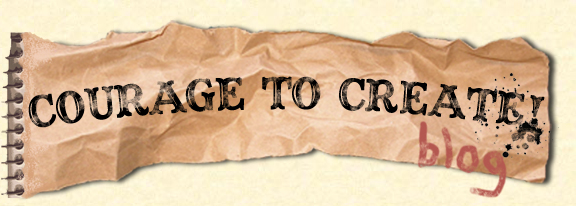




We had some fun with our friends at Hermes and Good Morning America Weekend this past Sunday and due to the influx of interest from viewers who also want to exert their handmade creative efforts on their own personal versions of designer inspired bags, I'm posting the tips, links, pics and other helpful tidbits here for easy retrieval.
I first want to say thanks to all the gracious, classy individuals at the Hermes store in New York for their genuine appreciation of the do it yourself approach we took with their highly acclaimed bag. The craftsmanship and history behind Hermes is inspiring and the exercise did nothing but invigorate my love for the art of leather working. And that, my friends was the important point behind this creative challenge that I hope was shared with every do it yourself enthusiast out there. I have dabbled in leather work before, but had never done anything as structured as this style of handbag and it was a rewarding challenge that can be enjoyed by anyone. Working with leather (even the least expensive varieties) is luxurious in and of itself. The act of saddle stitching is relaxing. The thought process into the construction is enlightening. After this exercise, you will be able to enjoy creating a number of leather goods for yourself.
Since you're playing with a pattern designed to create a paper version, you may have to do a little leg work on your own as I did, in regards to what works for you and how to go about certain steps, but that's part of the creative journey. Be resourceful. (A huge thanks to Byron at the Leather Factory here in Des Moines and Maker - Will Ghormley for their leather working expertise that helped answer a few of the questions I had when embarking upon this challenge!)
Be inspired by designer styles, but when you do things yourself, you have the empowering opportunity to inject your own individual style and ideas into the piece, as well! Take advantage of that and most importantly have fun with it. Stamp it with your own mark and tote it proudly!
For the Hermes purse pattern, click here.
For tips on other DIY methods to designer inspired bags, click here.
Tips when using the Hermes origami pattern for your own leather version (for individual use only) versus paper:
Enlarge this pattern to 3X its’ size to get the comparable dimensions of the Kelly Bag.
I recommend doing a sample/mock version first using vinyl or fabric or paper to insure your pieces go together properly and that you have a game plan before cutting into your actual leather. And feel free to improvise accordingly with your own ideas and versions.
The leather I used was an inexpensive alligator grain on cowhide that runs around $3/square foot. This is a stiffer leather (yet thin enough to be manageable and easy to work with) that holds its’ shape nicely when pieced together and is a good one to use for your first bag. Softer leathers stretch and will require more forethought, pattern revisions and leatherworking know-how.
Separate the side pieces from the pattern and cut separately (also remove the fold/glue portion of the pattern) it is not needed for the stitched leather variety.
Take the pattern strip for the handle and cut out (two) pieces, disregarding the ‘fold’ instructions. I also cut out two pieces of each of the straps and stitched together to give the inside of the straps a finished look. Can also just be satisfied with the raw side of the leather exposed on the inside of the strap and stitch around for decorative touch. I also rounded out the ends that get secured to the back side instead of keeping them square like in the pattern.
Use transfer paper to transfer all pattern markings to your leather so you know where to add hardware and make cuts.
Add the feet for your purse before adding lining. I used large dome rivets for one bag and pronged studs for another. Improvise accordingly. Use markings from pattern and bring them in slightly to give yourself enough room to stitch.
Cut out another piece of thin leather or fabric to line your bag. Use contact cement to secure to the inside of your bag pieces before marking holes and stitching.
To build up the handle, cut smaller strips (half the size of the pattern) and stack and glue (7 strips high) together with contact cement. Cover with larger strips, mark where to punch holes so you can stitch closely to the layered pieces for a snug handle. I used D rings to attach, and created my own leather tabs to secure to.
The base will need to be stiffened up by adding three layers of cardboard stiffener or stacked leather contact cemented together. Use base portion of the pattern as your guideline and cut your stiffener pieces to a dimension half an inch to three quarters of an inch smaller. This is to allow room for the fold and your stitches on the outside. You will add this to your base before covering with your liner.
You will also want to add a strip or two of stiffener to the top strip where the handle will get attached to prevent any sagging.
Use your body and side pattern to cut out another piece of thin leather or fabric to line your bag. Use contact cement to secure to the inside of your bag pieces before marking holes and stitching.
Use a straight edge or stitch groover to mark stitch lines. Use an overstitcher to mark where to punch holes or create your own template for evenly spaced stitch marks. Use 1/16” leather hole punch or awl to punch holes for stitching.
Hand stitch everything with a waxed linen thread using a saddle stitch.
Before stitching, piece together, lining up holes and temporarily tying in various places to make sure everything is lining up accordingly.
I created pockets and a zippered pouch separately using the same material as I used for the liner and secured using contact cement to attach to the inside of the bag. I attached these before I started stitching. Be sure to account for where you need to cut slits and such so that your pocket placements don't interfere with anything.
Resources: All supplies for this bag were acquired at Tandy Leather Factory. They carry all the necessary leatherworking supplies and leather.
The three part hardware I used for the closure is called a double plate turn lock that can be found online from a place called Ohio Travel Bag.
*****Please note that this project is meant for you to enjoy as an exercise in the fine art of leatherworking and to acquire a playful, do it yourself version of this exquisite handbag for your own personal, individual use. Use of this for any sort of financial gain or commercial endeavor could put you in illegal infringement of Hermes’ property rights.
Be respectful and simply enjoy this as a rewarding route to handmade, creative expression. You'll learn a lot about the art of leatherworking and gain an appreciation for this newfound skill. As with all handmade ventures, do it up in your own unique way. Experiment with fabric variations, as well! 


Monday, May 4, 2009
dEsIgnEr DiY
Subscribe to:
Post Comments (Atom)













1 comment:
Lovely bag. Is it available for purchase, or is the pattern still available through your site? It's not available through the Hermes website.
Post a Comment